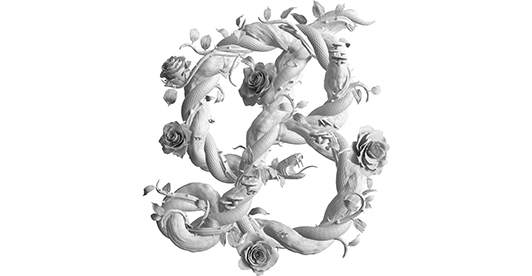
Stefan Sagmeister’s Key Insights on Designing a Life Centered Around Optimism

### Stefan Sagmeister: A Pioneering Graphic Designer Reflects on 30 Years of Art, Design, and Optimism
Stefan Sagmeister is an iconic figure in the world of graphic design and art, known for pushing boundaries and blending commercial design work with artistic expression. As one of the leading designers of his generation, his body of work spans over three decades, including major collaborations with musicians like The Rolling Stones and David Byrne, brands such as HBO and the Guggenheim Museum, and numerous personal art projects that challenge societal norms and explore deeper philosophical ideas.
In his **30-year retrospective** at the School of Visual Arts (SVA) in New York, Sagmeister is in the spotlight as part of the prestigious *Masters Series* award and exhibition, in a showcase reflecting his influence on modern design and art integrating various media.
### From Commercial Design to Contemporary Art
Sagmeister’s journey began in the early 1990s when he worked for Leo Burnett’s Hong Kong office, later joining the revered designer **Tibor Kalman**. By 1993, he launched his own studio, Sagmeister Inc., and quickly made a name for himself with boundary-pushing, innovative designs. His creative output includes album covers — like his **Grammy-winning design** for the Talking Heads’ *Once in a Lifetime* box set — branding projects, interactive installations, and even remarkable typography projects that straddle multiple artistic disciplines.
While known mostly for his commercial work, Sagmeister has recently embraced contemporary art. He transforms obscure Central European paintings by applying colorful resin, creating works that hold a dialogue between past and present. These altered paintings, typically of negligible importance in art history, are given a strikingly modern twist, emphasizing Sagmeister’s interest in reimagining historical narratives and exploring their hidden layers.
### Long-Term Thinking and Historical Perspective
In a conversation during his retrospective, Sagmeister discussed his relationship with history, revealing that much of his recent work revolves around **long-term thinking**. “I have a very, very tight relationship to history,” Sagmeister explained, describing how modern media often looks at situations in the short term, leading to a skewed perspective. By contrast, when viewed through a long-term lens, our world often appears more optimistic. For instance, Sagmeister points out that today, we live in one of the most democratic periods in human history, though short-term media narratives often obscure this view.
This forward-thinking approach was also embodied in his project, *Now is Better*, which examines how pessimism, amplified through modern media, can cloud our perception of progress. It argues for a more optimistic, evidence-based view of history, showing how humanity has overcome monumental challenges before and has the capability to do so again, particularly around pressing issues like climate change.
### The Allure of Pessimism
Despite Sagmeister’s optimism, he acknowledges the prevalence of pessimism, especially in creative fields. He believes this negativity stems from our evolutionary biology, where the brain tends to focus on threats as a survival mechanism. The *amygdala*, an area of the brain associated with processing emotions like fear, tends to prioritize negative information, making bad news more attention-grabbing — and it’s the reason why media outlets predominantly publish pessimistic stories.
Research even shows that people are more likely to click on headlines containing negative words, driving a media landscape dominated by gloom. However, Sagmeister insists on the importance of optimism for problem-solving: “If I have a 50-50 chance to solve a problem, coming at it with a positive mindset moves that to a 60-40 proposition.” He argues that viewing the world with optimism makes one more effective at navigating and overcoming challenges.
### A Body of Work Rooted in Emotion
Sagmeister’s portfolio spans multiple art forms but always centers on creating a *human connection*. “One thing that was always on my mind [is] trying to touch the viewer emotionally,” he reflects. While modernism at the time of his youth was cold and functional, Sagmeister’s philosophy has always been to make communication more human, more personal, and more intimate. His celebrated design work resonates deeply because it looks handcrafted, displaying a personal touch that reflects the maker behind it.
### Design vs. Art: Is There Really a Difference?
Asked how he views the distinction between design and contemporary art, Sagmeister offers a nuanced answer: “At the basics, design has to work, but art does not.” However, as a designer who has frequently crossed over into the art world, his own projects often blur these lines. For example, *Andy Warhol*, widely celebrated as one of the greatest 20th-century artists, began as a designer before deciding to focus on fine art. Even his famous *Brillo Box* sculpture comes with its own twist of irony, as the box’s original design was created by an abstract expressionist, tying Warhol’s pop art back to the very movement it was intended